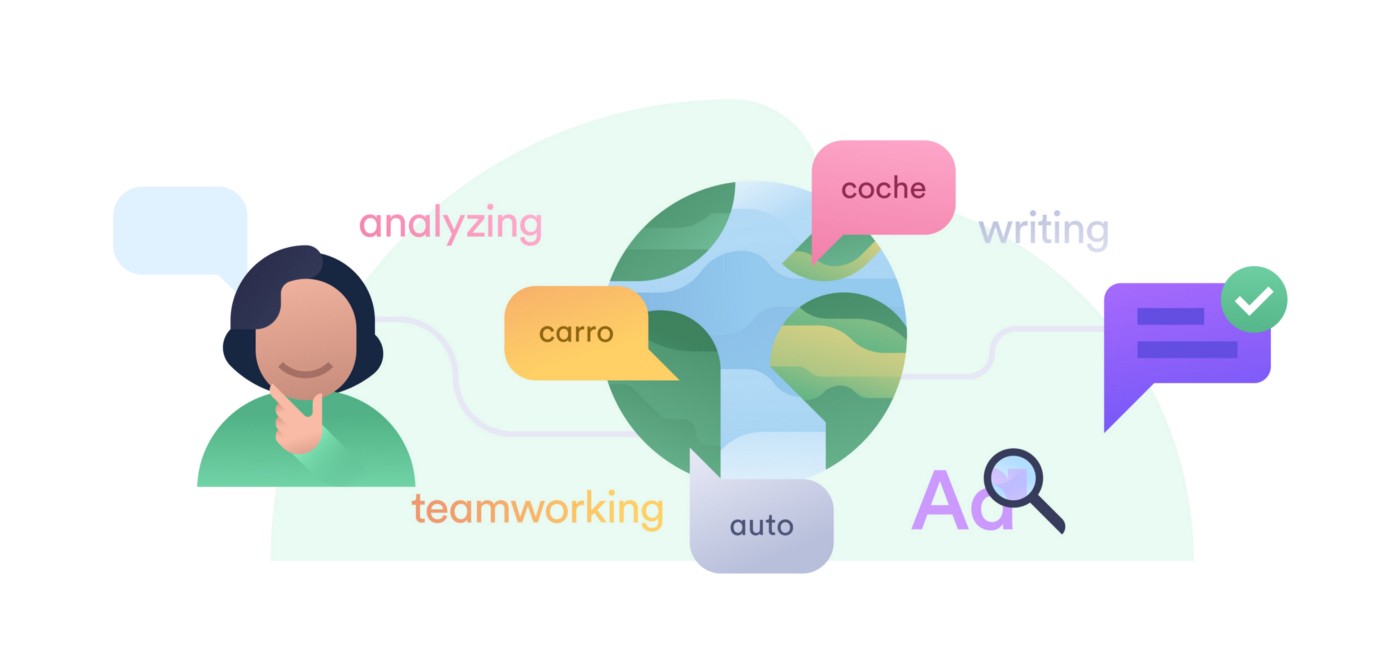Why it can be great to be a non native ux writer
When I accepted the role of UX Writer at Cabify, I asked myself if being Brazilian and writing in Spanish would be a limiting factor. Having lived in Spain for over a decade and worked for Spanish companies, I was pretty fluent in the local language. That being said, there was something I couldn’t change — I’d never be a native speaker.

After that, I immersed myself in the daily grind, leaving all doubts behind. In time, I discovered that being a non-native speaker was by no means a limiting factor but rather a distinguishing one, not only for me as a professional, but also for our team, and the company as a whole. And I’m not just saying that because my boss will read this post.
Analysis comes first
An UX writer must analyze the experience in its entirety before putting pen to paper. They must be involved in the process that precedes the writing, understand the needs of the user, and make their copy a part of the solution. They must anticipate frustrations in order to avoid them, ensure verbal coherence, and come up with messages that have a purpose, be it informing, selling, attracting new users, etc.
Having this global vision makes your writing flow naturally. You become so involved in the process that the text flows harmoniously, whatever your mother tongue may be. Oh, and experience is also important. Knowledge of the product, the dynamic of business, the user, the mission, and the objectives of the company make the task of writing something new a little easier.
Hassle-free writing
But a UX Writer doesn’t just make a living out of analyzing. We have to write, even if it’s just a little, as this discipline is ruled by microcopies. With character limits everywhere, it’s essential to communicate in a simple, clear, concise, and friendly manner, avoiding language which may seem obscure, technical, or formal. In other words, hassle-free writing. Et voilà! Another advantage of being non-native — you don’t confuse things by using complex vocabulary. Sympathizing with how hard it is to understand other languages, you take that into account when it comes to communicating a message in your product.
What’s more, the copy in an app must be understood not only by native speakers, but also by non-natives. The goal is to get through to people. And this challenge is something non-natives have had to deal with since the moment they started to learn a second language.

Facilitating localization
Being non-native but bilingual prepares you for a more open vision of language. Not every language has the same structure, the same level of precision, or the same word order. Managing more than one language fluently enables you to go a step further, identifying issues that may not be — found in the source language, but may indeed appear in possible translations.
Naturally, you advance as well in the process of localization and avoid texts that are hard to translate. For example, when it comes to creating proper names for specific products or categories, you directly eliminate variants that don’t have the same meaning in other countries.
Whenever possible, you look for terms semantically common to most markets. Your messages are often easy to localize for the team of translators.
Polishing over and over again
Writing in another language requires 100% of your attention, checking every doubt, polishing the text over and over again. Revising the text non-stop to check that you are coming across as clear, direct and correct.

This polishing process allows you to see things that others would miss, reducing the risk of a misunderstanding. You develop your most critical vision before sending the copies to production. You also become a more confident professional who recognizes that your worth goes beyond grammar rules (although they’re also important.) It’s a balance in which your contribution to the team is bigger than your possible mistakes as a non-native.
Flexibility and teamwork
You also learn to ask for help, to understand that nobody knows everything, and, as cliché as it sounds, that making mistakes is human. And the content team will be your best friend. Luckily, Cabify has a team of native copywriters who are always willing to answer any questions that even the “super natives” may have.

New vision of the world, new experiences
Finally, one of the key points: diversity. Foreigners provide the team with a new vision of the world and new experiences. They enrich the work environment and can help offer a new perspective when it comes to looking for solutions to a problem.
So, in conclusion, what’s keeping you from putting a non-native UX Writer in your life?

We are hiring!
Join our team and help us transform our cities with sustainable mobility.
Check out the open positions we have in .